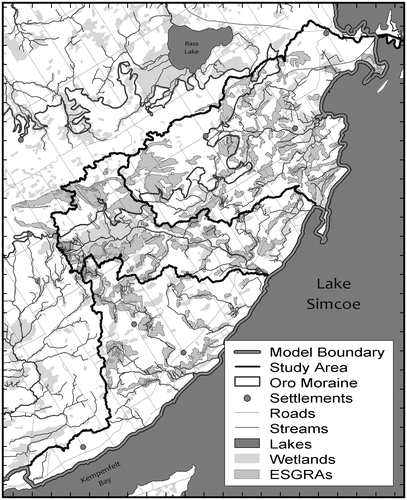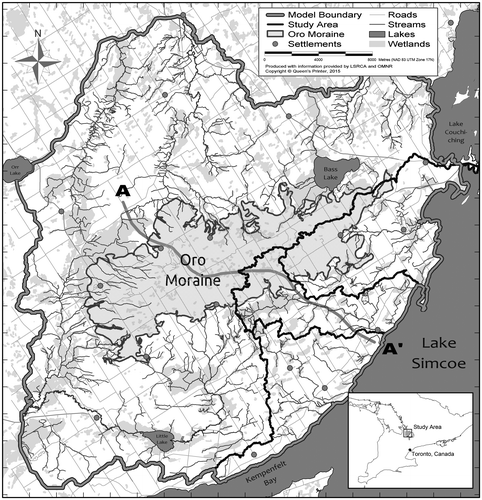Figures & data
Figure 1. The role ecologically significant groundwater recharge areas (ESGRAs) play in supporting ecologically significant features (reproduced with permission from Lake Simcoe Region Conservation Authority Citation2014).
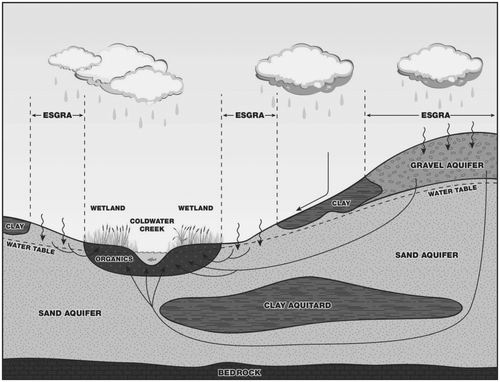
Figure 3. Section A–A’ illustrating the hydrostratigraphic layers incorporated into the GSFLOW model overlain with forward particle tracks from the Oro Moraine toward surrounding ecological features.
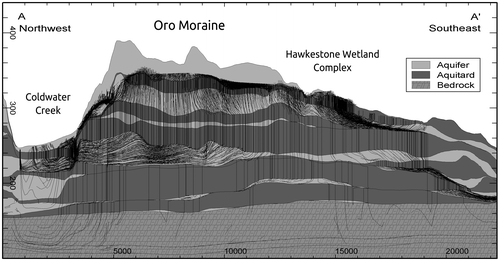
Figure 4. (a) Simulated model and observed streamflow at Water Survey of Canada Coldwater River at Coldwater (02ED007). (b) Scatter plot of simulated versus observed groundwater heads. (c) Simulated and observed heads at PGMN Well #W0000442. WY: water year.
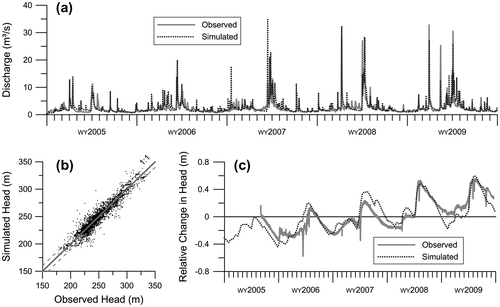
Figure 5. Example of particle-tracking from a significant study area feature (Bluffs Creek West wetland, Ontario, Canada) backward to areas of local recharge. ESGRAs: ecologically significant groundwater recharge areas.
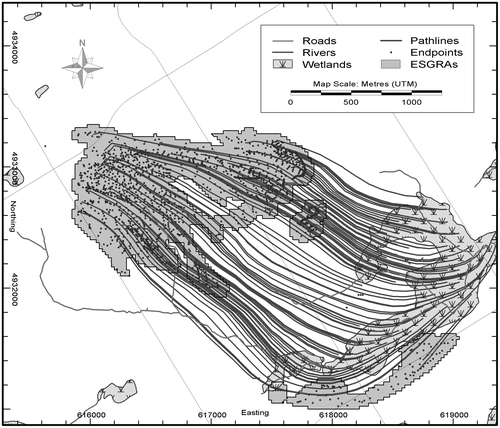
Table 1. Percent of endpoints covered by potential ecologically significant groundwater recharge areas (ESGRAs) with varying smoothing parameter ( ) and delineation threshold (
) and delineation threshold ( ).
).
Table 2. Percent of study area covered by potential ecologically significant groundwater recharge areas (ESGRAs) with varying smoothing parameter ( ) and delineation threshold (
) and delineation threshold ( ).
).
Figure 6. Delineated ecologically significant groundwater recharge areas (ESGRAs) contributing to significant ecological features within the study area.
